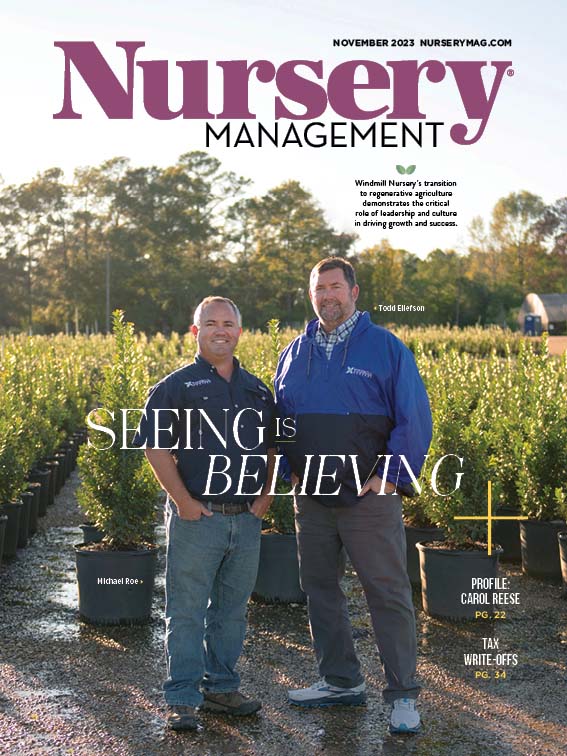
Taking on large capital improvements can be a challenging task for any level of manager or any size operation. Over the course of my career, I have been fortunate enough to be part of some very large company spends. Whenever the fourth quarter starts and budget season looms, I always try to assess the true needs of capital outlay. Sure, most department managers want to shoot the moon with the requests, and it is my job to make sure the request will aid in whatever job is involved. There are other questions that also need to be answered: what is the payback time, how will it save labor, what safety concerns loom, and what is the overall benefit to the business, specifically efficiencies? We start our capital budgeting in October with an initial first-round table with key staff. This allows the whole group to be in the know about what requests are out there across the departments and divisions. It also gives us a chance to challenge the beneficial aspects of what is being presented. It takes a group of leaders willing to set their ego and pride aside and not take the groupthink as personal attacks but rather focus on the efficiency gains for the future.
Taking the time to do the prework is essential to a successful pitch to owners or decision-makers. The more detail and bid-outs we can present in our capital request packages, the more chance of approval. What I like to present is a well-thought-out plan down to the smallest detail. Did we think of everything that we need to pull off the project or item? Not only in the now, but five, 10, 20 years from now. Will it still be a relevant request, and will managers have any regrets that they wished they would have done things differently? Thinking of every detail and setting aside intentional time to visualize any project is important. Things I often consider are freight and or logistic costs. Using national vendors is an important part of what we do. Sourcing locally definitely has its advantages, but for some projects, the scope just doesn’t allow it. We always consider our local vendors first from a support and logistics advantage. Freight can and is a real cost to most projects, both locally and nationally. The bid and budget process has to take this into account when considering the project’s timelines and costs.

Once we have identified and sourced our project, the real work begins. One of the first items we do is start our soft timeline. Without goal dates for completion, projects can linger even beyond the current budget year, so it is important to work with vendors and set some projections and deadlines. For me, the whole process is based on our belief action cycle from outcomes to completion deadlines. I learned about this process in early 2016 from a sales training group and have carried it through to how I approach managing in today’s world. The cycle dictates that the outcomes you achieve are directly tied to the action you take. The decisions we make as managers are determined by the beliefs we have as an individual. To put it more simply, if you think something is going to be a failure, then most likely it fails. If you think something is going to be successful, then you have to establish your belief that your outcomes and decisions are going to positively determine the outcome you expect. Extenuating beyond that is the effect of how the project is viewed and collaborated with your team and vendor. There is nothing that will take down a really exciting project more than pessimism, and it’s crazy how that can spread throughout individuals and divisions. I call it going down the negative rabbit hole that never ends. Keeping your thoughts in a positive direction is the only way to get large projects done and within the timeline you need them.
Wasting time and dwelling on setbacks only stands to decrease your chances of success. Does that mean setbacks are not going to happen? No. In fact, of my 25 years in this industry, I don’t think I can think of one major capital project that didn’t run into some sort of issue or problem. It may be as small as not having the right power at the right spot or accidentally measuring a large building incorrectly for a project that was supposed to go inside it. It happens. Overcoming challenges and adversities is the foundation of big projects; the bigger the spend, the bigger the risk, and of course, everyone is watching how you respond. One of my early mentors, usually after making a mistake, would often ask me, “What do you do when you spill a large glass of milk? Simply clean it up and pour another one.” I always appreciated that approach and knew that if I did my due diligence for a project and mistakes still happened, I could live with that. No matter how much planning goes into large capital projects, knowing that we will have to adapt and overcome at some point is just part of the gig. Don’t get caught up in the issues that did not go as planned. Instead, just pour another glass and keep moving your team forward.


Explore the November 2023 Issue
Check out more from this issue and find your next story to read.
Latest from Nursery Management
- SaniDate WTO receives EPA registration to control foodborne bacterial pathogens in irrigation water
- Peter Orum, founder of Midwest Groundcovers, passes away at 82
- MANTS 2025 encourages exhibitors to showcase new and innovative products
- Adaptability: a nursery necessity
- Star Roses and Plants launches redesigned website
- Star Roses and Plants wins awards from 2025 American Garden Rose Selections testing program
- Hairy bittercress (Cardamine hirsuta)
- USDA grant will expand resources for school orchards in New England





